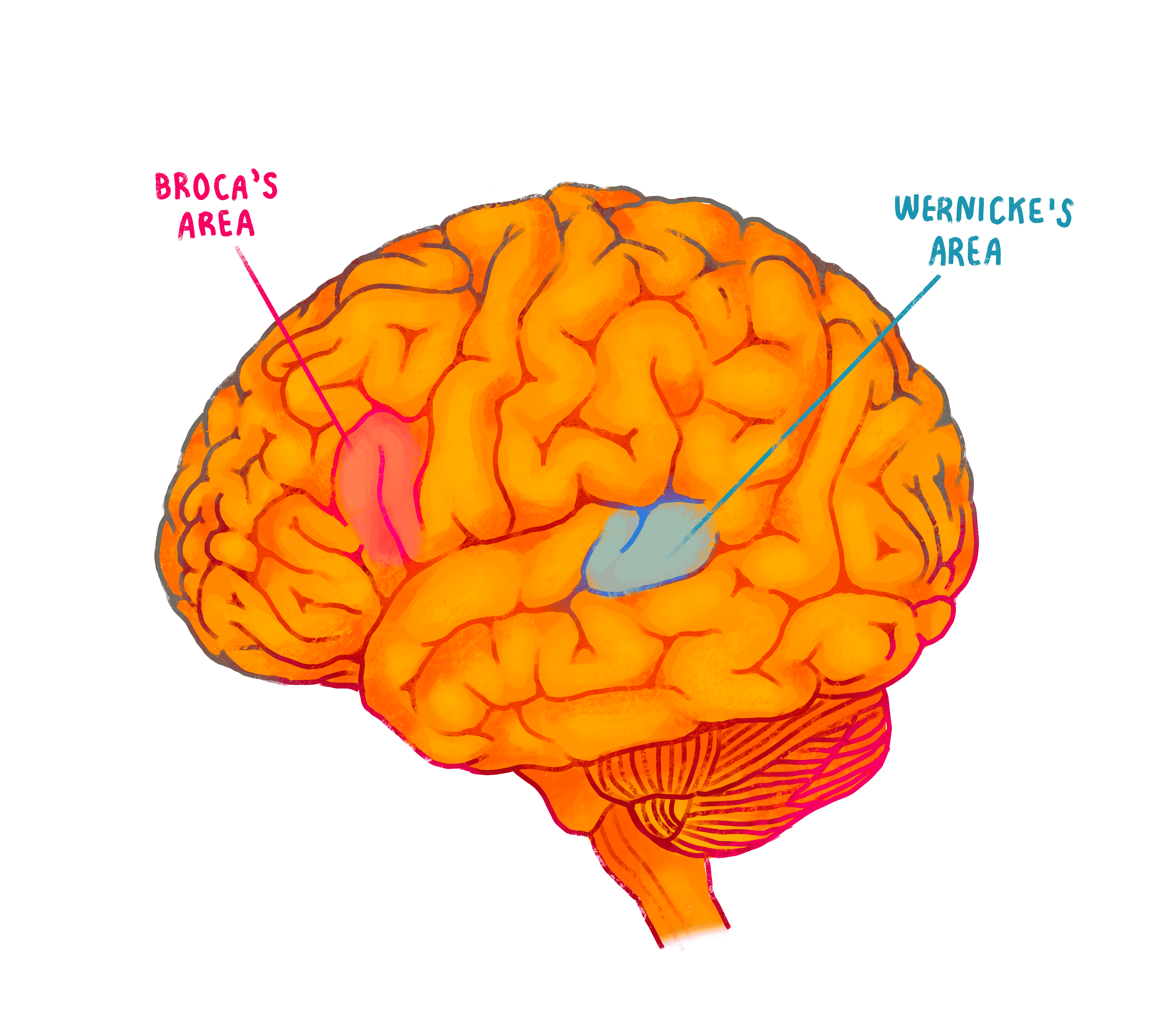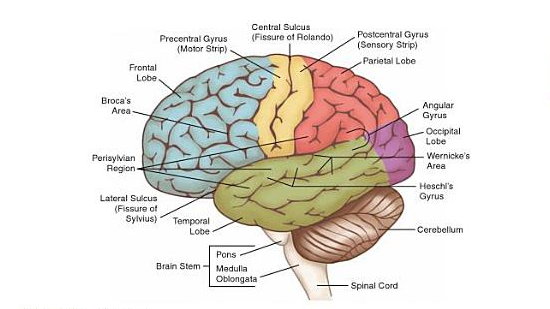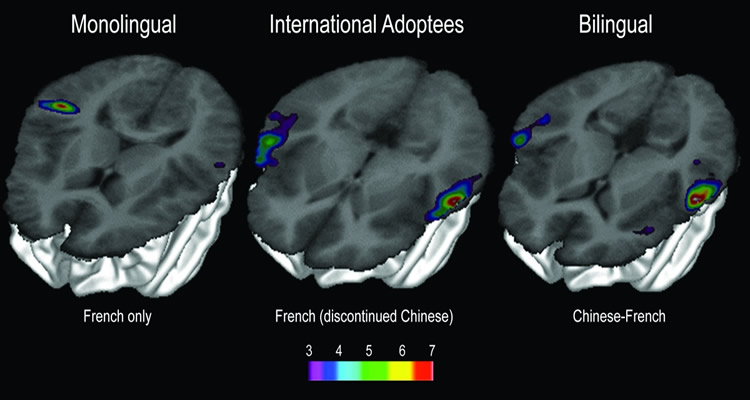
Introduction
Do you remember sitting in front of the television as a kid, listening to Dora the Explorer or Handy Manny as they taught us Spanish through their many adventures? While their continuous repetition and cluelessness in situations with obvious answers may have felt irritating and unnecessary, this repetition is exactly what jumpstarts the process to bilingualism. Developing children can quickly grasp language skills because these visual and literary tools allow them to fully process each new word or lesson, categorize it, and strengthen their neural synapses to formulate patterns and linguistic connections. With these key details of language perception and formation in mind, let’s start by taking a look at how children begin to acquire language.
Language Acquisition
There are two prevalent approaches to language acquisition in children – the usage-based social science model and the biolinguistic approach. The usage-based approach suggests that children accrue linguistic competence as a result of environmental input, and then use general learning mechanisms like analogies, associations, and categorization of ideas to create records of their linguistic experiences. For example, Dora first states the target object in English accompanied by the Spanish translation (associations), then asks viewers to repeat the Spanish vocabulary (repetition), and finally restates the phrase in English (analogies and ultimately categorization). Moreover, this system of language acquisition centralizes constructions, templates, and schemas – where a construction is understood to be a basic unit of language of any size or complexity ranging from a single word to grammatical structures like subject-predicate relations. It theorizes that more frequently used constructions allow learners to master those constructions earlier on in their language development process than those presented less frequently. However, how do children advance from speaking babble and broken sentences to the expected fluency of adult speech? As children get older, they learn to form better generalizations based on receiving input from adult speech around them. This occurs as childrens’ less articulated versions of grammatical constructions are continuously confronted with the corrected adult constructions, so the children evolve from babble to more closely matching the adult speech. Therefore, the usage-based approach can even be thought of as the “input-matching” approach.
Conversely, the biolinguistic approach suggests that, rather than piecing together constructions one-by one, language learners come equipped with the principles and parameters of Universal Grammar. Universal Grammar is the theory that humans possess innate abilities for language acquisition including a set of specific grammatical categories that are recognized as the building blocks to all human languages. By drawing upon similar structures within the principles of universal grammar and the target language, children can create associations to improve articulation and build a better understanding overall. This approach addresses why children can acquire language rapidly and effortlessly, mastering even complex structures by age 3. These perspectives account for how children culturally accrue language skills, but how does this evolution of understanding impact their mind biologically?
Biolinguistic Processing and Performance
Neurobiologists have generated new theories for how brain structure and function changes as children develop throughout the language acquisition process. As the fundamental units of the brain and nervous system, neurons and synapses receive external sensory information and send electrical signals throughout the body, therefore playing a large role in how children process and categorize information. Child brains begin with an initial over-abundance of neurons and synaptic connections, some of which are gradually discarded once deemed non-functional. Hence, in terms of language acquisition, children learn to ignore and inhibit irrelevant information as they make new synaptic connections with corrected language and grammar associations. This relates to the usage-based postulation that children build new constructions over time to better comprehend and utilize language.
Moreover, two main areas in the cerebral cortex manage language processing; Wernicke’s area, located in the temporal lobe, controls language comprehension, while Broca’s area, located in the frontal lobe commands speech production. When Dora invites a child to repeat a word with her, such as the word “apple”, the sounds from Dora’s words translate to an electrical signal inside the child’s brain that first travels to Wernicke’s area, allowing the child to understand Dora’s speech. From here, the developed signal proceeds to Broca’s area, enabling the child to repeat “apple” back to Dora. As behavioral and cognitive functions emerge and become automatized, the brain reorganizes to represent the new, complex information more efficiently. In terms of language acquisition, it strengthens the connection across these language processing areas and eliminates irrelevant synapses that are originally present. This indicates the existence of modular organization, or the idea that the brain gradually forms its structure to function most efficiently, thus mirroring the ideas of the usage-based model of language acquisition.

The Effects of Bilingualism
While these varied theories explain how the brain acquires language, the processes may lead to distinct neurological outcomes within the bilingual brain specifically. Researchers from Mayo Clinic recently used functional magnetic resonance imaging (fMRI) to scan the brains of 35 subjects, 17 bilingual and 18 monolingual, and found more active brain scans for their bilingual subjects. The fMRI determined this by examining differences in activation topography for both processing and performance in the native and second language in bilingual subjects. The results suggest that the first and second language share a neural network for processing information, with varying degrees of activity in that common network when switching between the two languages. The fMRI also notes distinct neural pathways used for similar cognitive tasks performed in different languages. Thus, the increased neural networks as well as the increased neural activity, for processing and performance respectively, promotes overall increased brain activity when compared to a monolingual brain. Consequently, this research suggests that bilingualism increases blood flow to the brain, which can lead to increased brain oxygen levels and energy production as well as reduced inflammation and improved reaction times. Further research is currently underway to delve into whether this increased blood flow can even potentially decrease the presence of disease and help slow down brain aging.

Although bilingualism provides many benefits, some people believe a common misconception that the act of learning the second language and acquiring language skills provides the cognitive advantage, when it may in fact be attributed to something else entirely. When looking at how bilingually raised children acquire language, researchers at the National Institute of Health (NIH) found that while the fundamental process of language acquisition remains the same despite the number of languages being acquired, the task of separating these languages is what actually results in cognitive advantages. A case study conducted by the Eunice Kennedy Shriver National Institute of Child Health and Human Development (NICHD) exemplifies this finding. The study followed 48 incoming high school freshman students, 23 of whom were proficient in Spanish and English and 25 proficient in only English. In the study’s first task, the teens listened to the speech syllable “da” while researchers monitored the intensity of brain activity in the auditory brainstem using electrodes, both with and without confounding background noise. Monolinguals showed a less intense response when recorded with background noise while bilinguals showed virtually identical responses with or without the background noise. In an additional test on selective attention, the teens attempted to click a mouse when they saw or heard a 1, but not a 2. Over the course of 500 trials ranging from 1-2 seconds over a period of 20 minutes, bilingual teens outperformed the monolingual teens in terms of response accuracy. By comparing the results of these studies, researchers conclude that the bilingual experience may help improve selective attention by enhancing the auditory brainstem response.
From the ability to separate language rules, to improving task separation abilities, inhibitory control, and better identifying relevant speech, bilingualism enhances the brain’s activity rate and ability to focus. So the next time you find yourself frustrated with Dora asking if you can see the castle in Spanish, or waiting for her in those awkward pauses, remember she is just looking out for your bilingual brain!
Sources Used
Bilingual Effects in the Brain | National Institutes of Health (NIH)
How does the bilingual experience sculpt the brain? – PMC (nih.gov)
Learning and representation in speech and language – PubMed (nih.gov)
https://www.sciencedirect.com/topics/social-sciences/language-acquisition
FileBiolinguisticsRev.pdf (mit.edu)
How bilingualism protects the brain from aging: Insights from bimodal bilinguals – PubMed (nih.gov)

